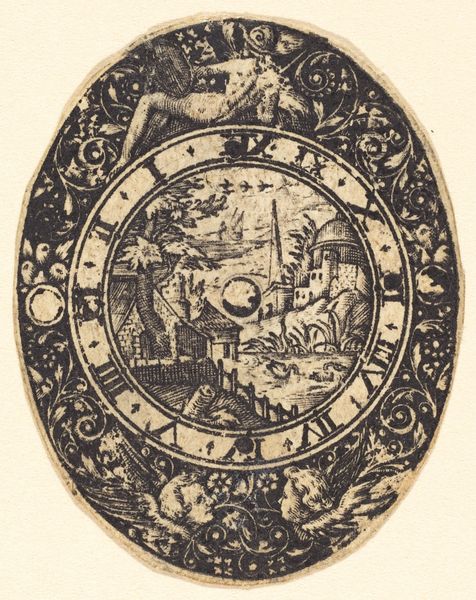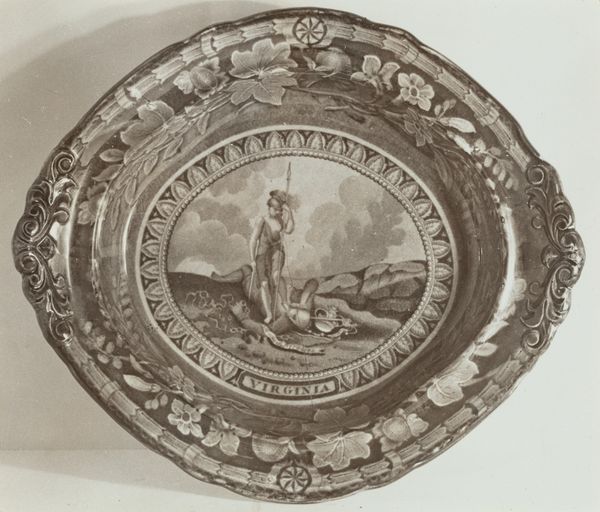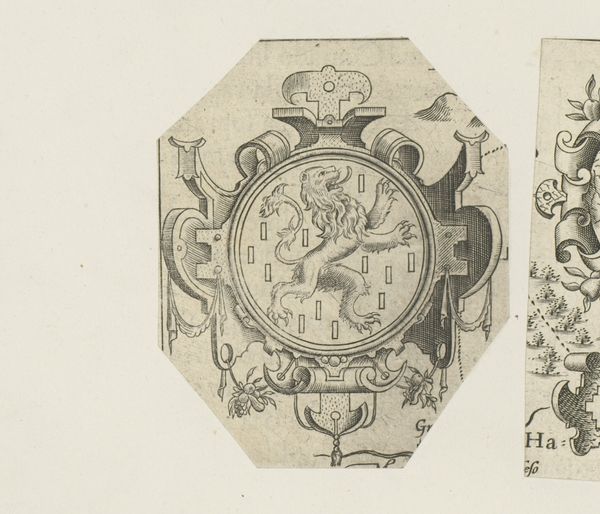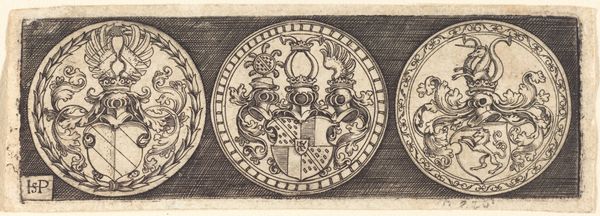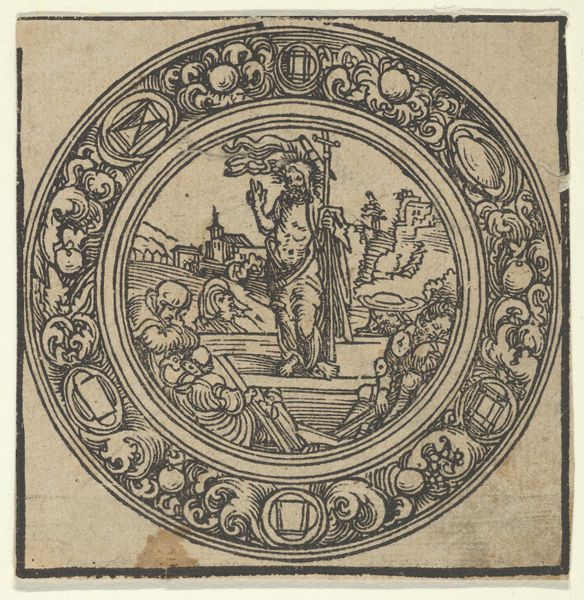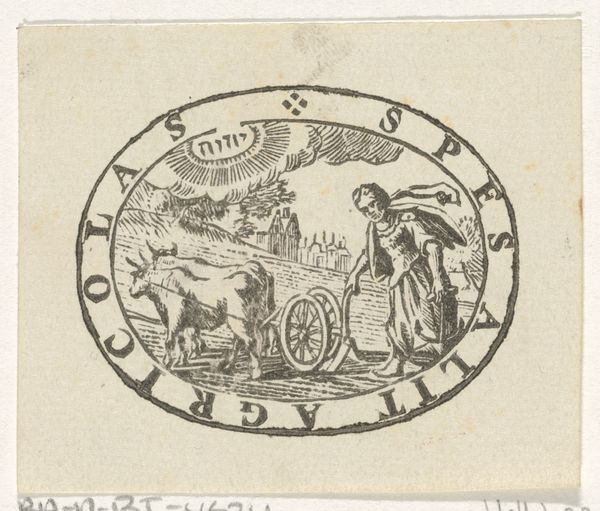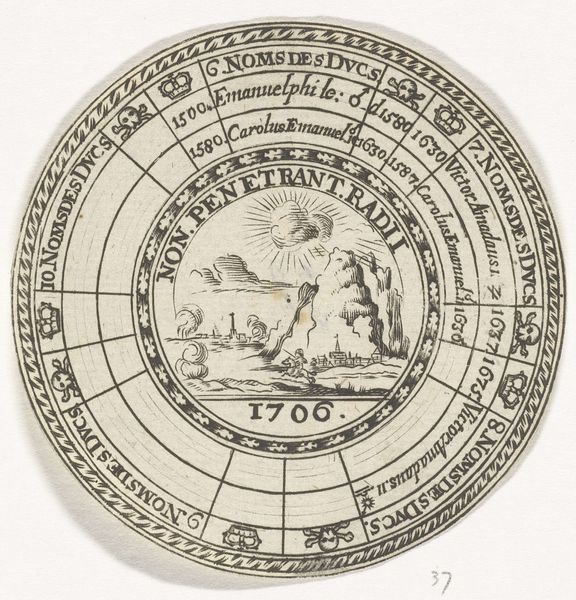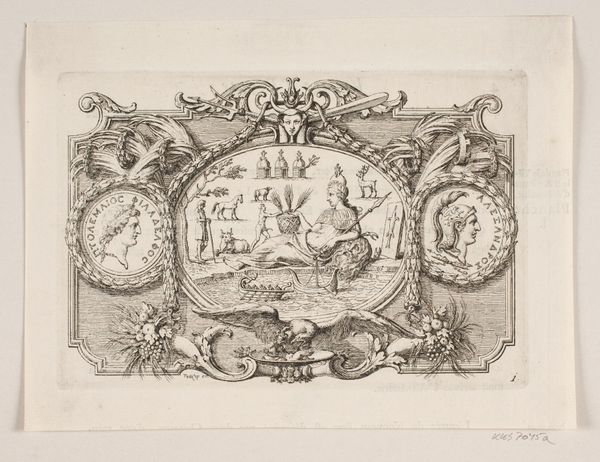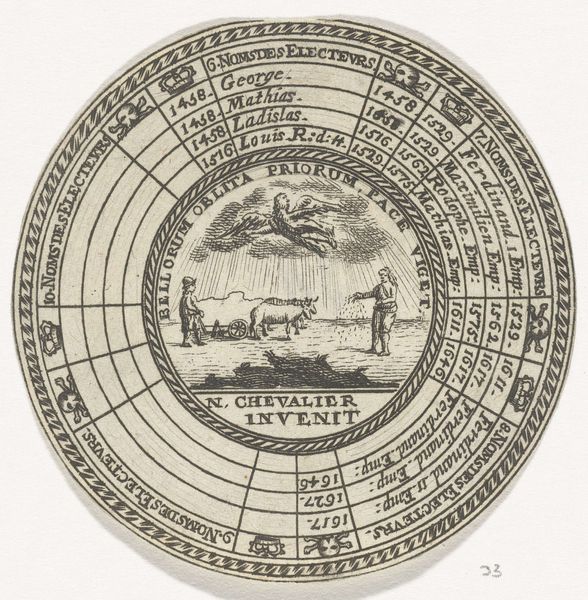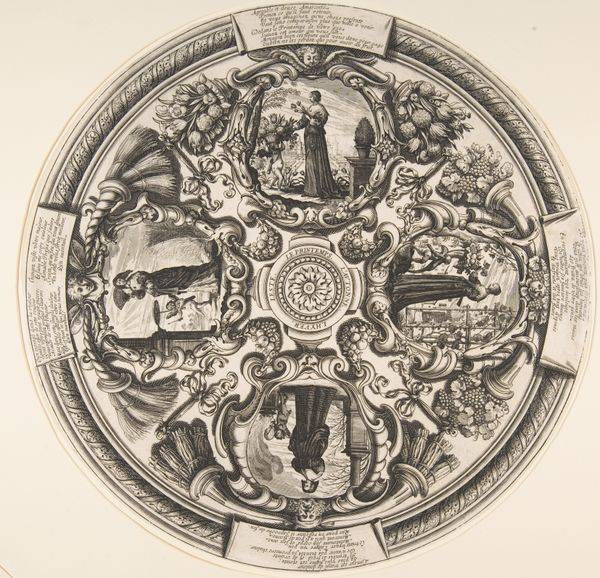
graphic-art, print, intaglio, engraving
#
graphic-art
#
allegory
# print
#
intaglio
#
landscape
#
figuration
#
11_renaissance
#
line
#
history-painting
#
engraving
Copyright: National Gallery of Art: CC0 1.0
Editor: This intriguing intaglio print, titled "Time" by Antoine Jacquard, depicts what seems to be an allegorical landscape contained within the bounds of a clock face. The mood is somber, and it appears to carry an important message about our relationship with time. How do you interpret this work? Curator: Indeed, it's an object steeped in symbolism. Time, visualized here, isn’t simply a measure but a container for our existence, our memories, and even our fears. Consider the allegorical figure; what does his placement, intertwined with nature and architecture, tell us about the role of humanity? Editor: He almost seems to blend into the scenery – is this meant to suggest we're inseparable from time's passage? That everything changes in nature, just like in our built environment? Curator: Precisely. Look closely at the water in the scene. This, combined with the figure holding fruits suggests themes of change and harvest, recurring cycles reflected within the framework of the clock. Think, too, of the Roman numerals: a constant reminder of classical learning, of history – time folding in on itself. Editor: That's fascinating! I hadn't thought of the cyclical aspect so explicitly. Does the rather stern character along the edge affect its reading? Curator: Good observation. These could be 'grotesques,' guardian figures. The monsters can serve to both ward off evil or illustrate human sin – so maybe that helps place time as something that must be feared and respected. It shows not only its linearity, but circularity as well – ever returning to those symbolic gatekeepers. How do the images make *you* feel? Editor: I think, seeing the way symbols and traditions were encoded is inspiring. It's also thought provoking, and inspires respect for traditions and beliefs. Curator: That’s it, exactly. Art as a reminder, a carrier of meaning. A testament to human time, cultural memory.
Comments
No comments
Be the first to comment and join the conversation on the ultimate creative platform.
